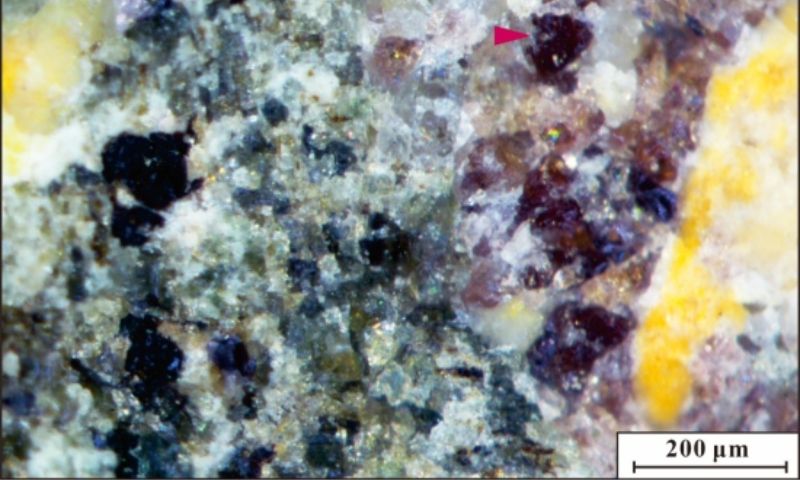China has discovered a new silicate mineral, known as Nipeiite-(Ce), with the highest cerium content found so far, in a rare-earth mine in Central China's Henan Province. The mineral has been recognized by the International Mineralogical Association, China's Ministry of Natural Resources announced on Friday. An expert noted that it can be used in high-tech areas such as aerospace.

Nipeiite-(Ce) and its symbiotic mineral assemblage Photo: Tianjin center of the China Geological Survey
The mineral is named after Ni Pei, a professor from the School of Earth Sciences and Engineering at Nanjing University, in recognition of his outstanding achievements in the research of tungsten and rare-earth mineral deposits, according to the ministry.
Sima Xianzhang, an expert from the Tianjin geological survey center said that alloys containing the cerium have good high-temperature resistance and compression resistance, making them useful in high-tech fields such as aerospace engines, according to The Paper.
When conducting fieldwork, samples are gathered that are deemed relevant based on the hardness and color of the rocks. Upon analyzing the samples, the presence of abnormal elements not previously documented were discovered. There was then further research to investigate the physical, chemical, and crystal structure of the samples, which confirmed the existence of a previously unknown mineral, said Ren Junping, an expert from the Tianjin geological survey center, according to China Central Television.
Vice Director of the Tianjin geological survey center Zhang Qizuan said that the discovery not only enriches the field of geology, but will also have a significant impact on solid physics and chemistry. Cerium, a rare earth element, is mainly used in new materials and strategic emerging industries, and it also has economic value, said Zhang, according to the report.
The mineral was discovered in Taiping town, Henan Province. It has a light red to reddish-brown color and appears grayish-white, with a density of 4.943 grams per cubic centimeter. It is currently the richest cerium-containing silicate mineral found in nature, and it has significant research value.
It is also the second natural new mineral discovered by the new mineral research team from the Tianjin center of the China Geological Survey in the rare-earth mines of Taiping town. The first discovery was Taipingite-(Ce).
The mineral has an enriched naming scheme with distinctive Chinese cultural characteristics, enhancing China's influence in the international field of new mineral research, according to the Tianjin geological survey center.
So far, there is a total of 6,006 known natural minerals, among which 192 were discovered in China, accounting for approximately 3 percent of the world's total mineral count, according to the CCTV report.
Source: Global Times
https://www.globaltimes.cn/page/202401/1305730.shtml